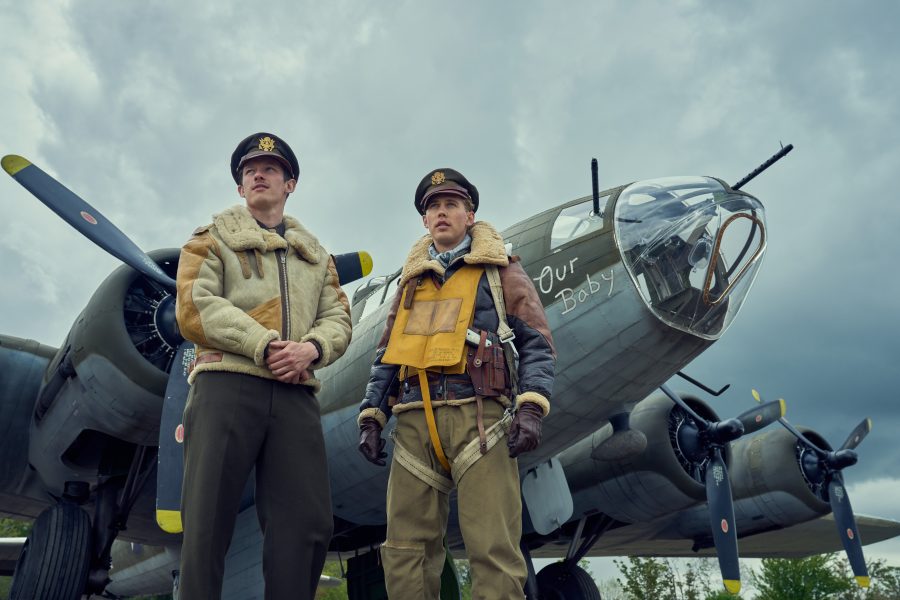The new nine-part TV series, “Masters of the Air,” masterfully captures the grueling reality of life in the U.S. Army Air Force’s 100th Bomb Group during the daylight bombing campaign over Europe in World War II. But viewers watching the series on Apple TV+ might miss the larger historical context, according to one expert.
“It risks being too much of an attrition slugfest from a second lieutenant’s viewpoint, where life is really bad and you are struggling to hang on,” said Doug Birkey, executive director of AFA’s Mitchell Institute for Aerospace Studies, who grew up working on World War II-era bombers and completed a master’s thesis on the bombing campaign. “That’s a very real experience.”
But it leaves out the larger historic picture that explains why American military leaders chose that path.
The show premiered with two episodes on Jan. 26 and AppleTV+ is making a new episode available every Friday through March 15.
Tactical Brilliance
“Masters of the Air” follows a handful of pilots, navigators, ground crew, and other members of the 100th from their arrival at Thorpe Abbotts, England, in the summer of 1943, to the end of the war in Europe in May 1945. The production vividly portrays the terror of air combat through details large and small: from the frostbite a tail gunner suffers trying to clear a machine gun jam at altitude, to the centrifugal force pinning crews inside a stricken bomber, to the spent .50 caliber shell casings spilling out of a hatch after a difficult mission.
Beyond the terror, the show also captures the exultation of watching a formation of bombers take to the sky, the selflessness of pilots risking an entire squadron to protect a wounded comrade, and the moments that seem too real to be true—like when an aircraft commander and a squadron commander argue over who should parachute out of their falling B-17 last, a real-life detail that actually happened.
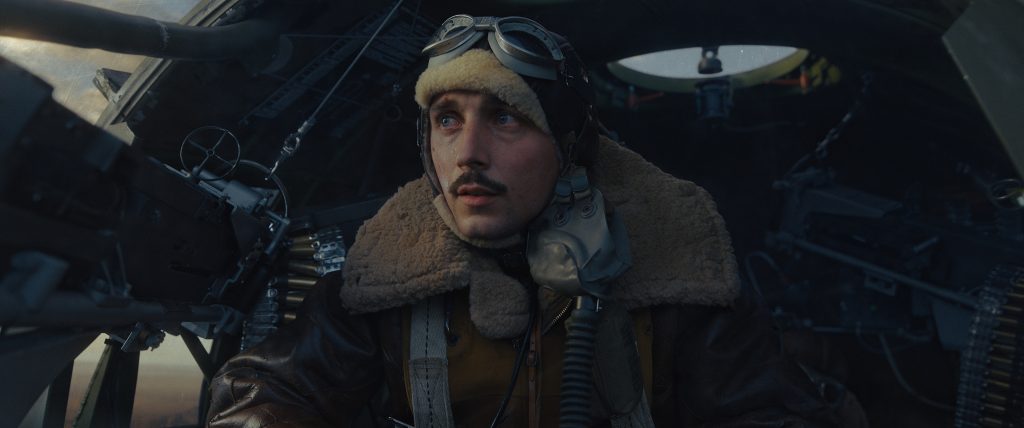
The attention to detail is a service to the Airmen of the 100th and the larger 8th Air Force. Birkey applauded producers Tom Hanks, Steven Spielberg, and Gary Goetzman for devoting so much time and resources (10 years and about $250 million) to the project and for kicking off a wave of newfound interest in the topic.
“I think if these guys came back and saw themselves portrayed, they’d be happy with it,” Birkey said.
Birkey grew up helping to restore B-17s and B-24s and knew dozens of WWII veterans who flew those aircraft. Among them was navigator Lt. Harry Crosby, a central character throughout the show’s nine episodes.
“They were like my surrogate grandfathers,” he said. “They were tremendous individuals and I was blessed to know them closely.”
The end of the final episode, which shows photographs of the actual people portrayed in the series, was particularly touching. “I got choked up, because it reminded me of all the guys I’ve known and lost over the years,” he said.
Birkey credited the filmmakers for their accurate depiction of individual experiences in the 100th, and for not whitewashing the devastation of strategic bombing. He also praised the meticulous set design, the exquisite static aircraft, and even the accurate evolution of the Airmen’s uniforms over the course of the war.
“They bought from top shelf places,” Birkey said about the wardrobe. “They got the jackets from Eastman Leather in the United Kingdom. That is the varsity level.”
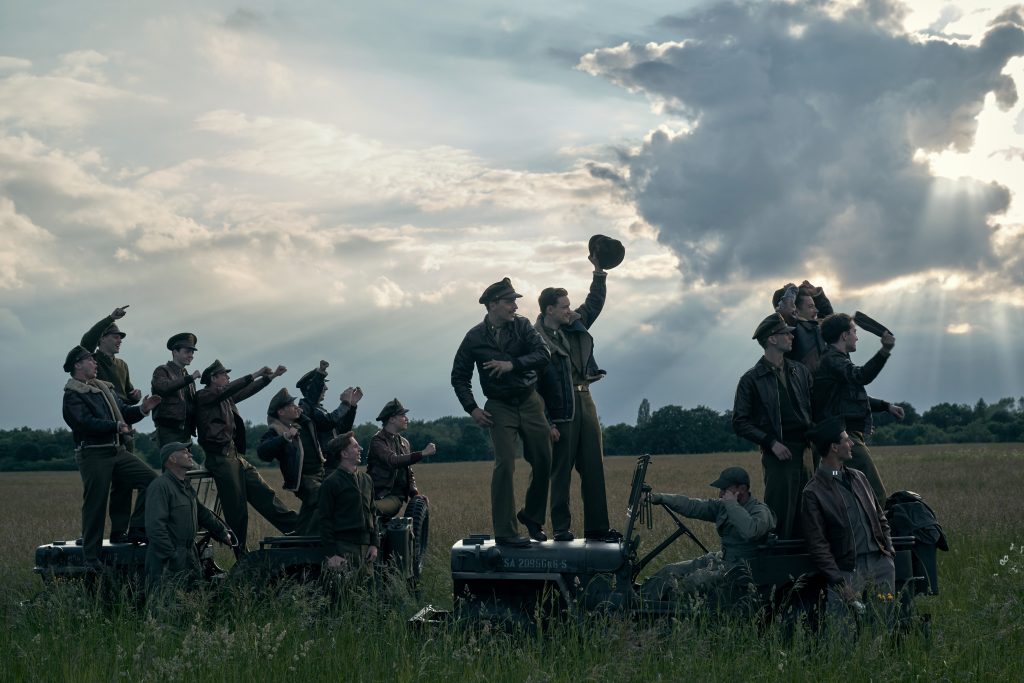
But while the real-life details were excellent, Birkey questioned the computer-generated effects. To one who has spent hundreds of hours flying in and maintaining B-17s, Birkey viewed the movement of the flying B-17s cartoonish, with take-off and climb rates far too fast and steep. He also criticized the formation scenes for failing to depict how much the aircraft bounced and shook in the chopped air left behind by the hundreds of engines in formation ahead of them.
Beyond the physics, the show did not portray the aircraft as characters in their own right, an area where the 1990 film “Memphis Belle” succeeded.
“I cannot emphasize enough how much these aircraft are alive,” Birkey said. “They have their own personalities and sounds, they smell certain ways from their exhaust and oil and fuel.”
Strategic Omission
But the biggest miss, Birkey said, is the lack of a strategic narrative that would have given context to the 100th’s terrible losses: 757 men killed or missing, 923 prisoners of war.
The core objective of strategic bombardment was to avoid the endless attrition of World War I. Gens. Henry “Hap” Arnold and Carl “Tooey” Spaatz, the founding fathers of U.S. airpower, argued throughout the 1920s and 1930s, often at great risk to their own careers, that targeting centers of production, transportation, and leadership would be a more effective, less costly way to win a war.
The problem was scale: before the start of the war in 1939, the U.S. Army Air Corps had just 26,000 troops, about 1,200 bombers and fighters, many of which were obsolete, and a mere 23 B-17s. By the end of the war, the U.S. Army Air Forces would grow to a peak strength of 2.4 million troops and 80,000 airplanes. About 12,700 B-17s were built over the course of the war, but it took several years to get to that point, and until then the strategic bombing campaign was a miserable grind.
“They don’t care if they kill us all, do they?” Crosby asks, referring to his commanders in one episode. Through 1942, 1943, and early 1944, the USAAF conducted relatively accurate and effective strikes on ball-bearing plants and centers of industry, but with such high loss rates, and without enough trained crews and bombers, it lacked the ability to re-strike those targets.
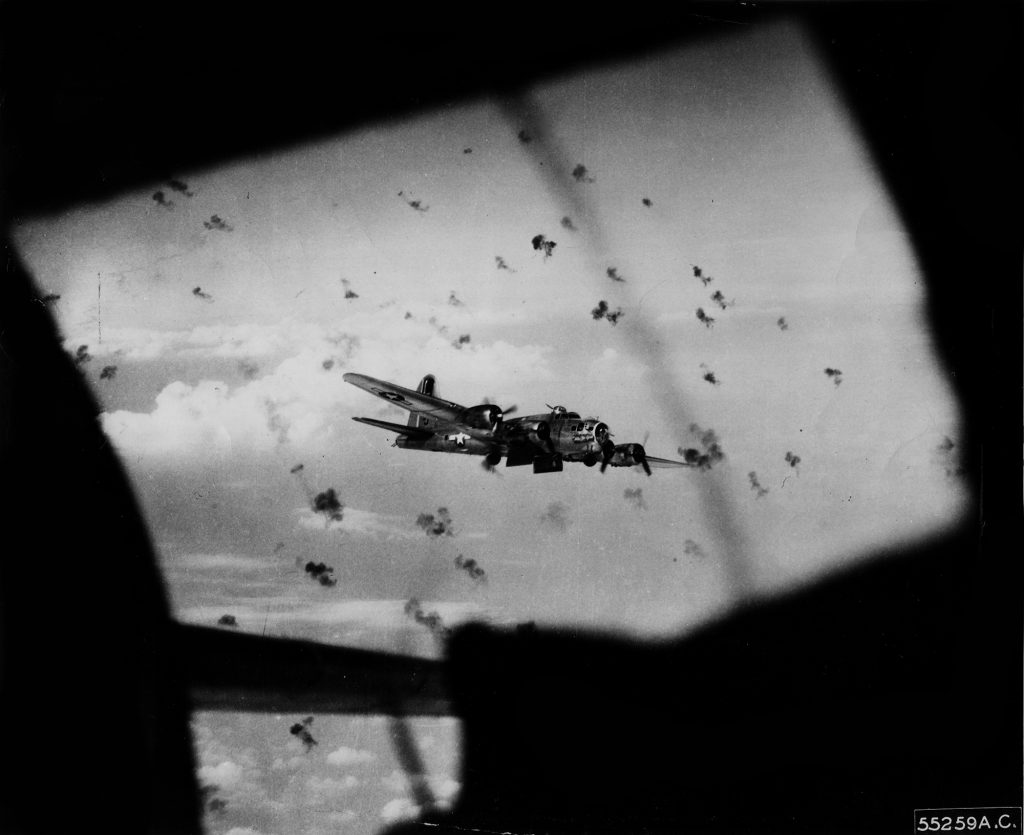
Not until 1944 did the USAAF finally gain the scale to re-strike targets, such as petroleum refineries. “Masters” mentions how the size of the raids grew from just 12 bombers in June 1942 to more than a thousand by the end of the war. The development of long-range fighters equipped with drop tanks also reduced losses by protecting bombers closer to the target.
Still, there was a good reason why the air commanders kept sending crews to the meat-grinder before sufficient scale was achieved. With the Soviet Union losing millions of troops on the Eastern Front and the rest of the Allies fighting in North Africa and Italy, the USAAF had to do what it could to keep the pressure on Germany, Birkey explained. Many of the commanders flew those missions themselves, as well.
“We had to do anything possible to exert pressure on them and degrade their ability to fight,” he said. “Something was better than nothing, and it was an existential war–everything was on the line. The luxury of waiting for the perfect was not possible.”
Though the losses suffered by the 8th Air Force during the bombing campaign surpassed 26,000 men, about 30 percent more than the number of Marines killed in the entirety of World War II, those losses were not in vain. The early raids took vital German air resources away from other fronts and took a substantial toll on German war production. Birkey said the overall success of the campaign is evident in the fact that the Allies crossed from Normandy to Berlin in less than a year, where it took four years to go just a few miles in either direction in World War I.
“That is how you measure the impact of strategic bombing,” he said. “We were able to so stress their system that when the invasion occurred, they were extremely leveraged.”
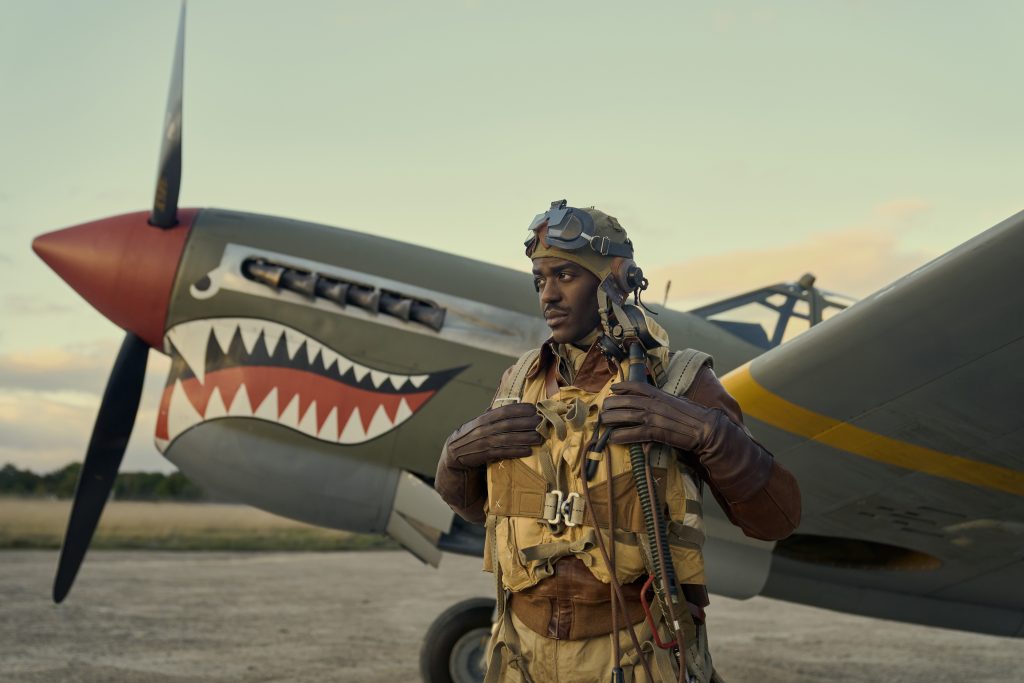
While “Masters” includes some exposition about daylight bombing in episode two, the limited focus on strategy missed the opportunity to put the characters’ experience into context, Birkey said. He said past works such as “Memphis Belle,” “Command Decision,” and “12 O’Clock High,” were more successful at that aspect, as was the 1998 miniseries about the Apollo program, “From the Earth to the Moon,” which featured Tom Hanks introducing each episode with historical context.
“It’s entertainment, we’re not here for a Ph.D-level lecture,” Birkey said. “But you need to bring a little bit more in.”
Birkey also saw the cramped treatment of the Tuskegee Airmen, the Black American aviators who helped break the color barrier for the armed forces, but whose story was jammed into just the two final episodes.
Why It Matters
“Masters” is a vivid reminder of the brutality of air-to-air combat, and it comes at a time when the U.S. military is preparing to fight near-peer rivals such as China and Russia without the air superiority that was taken for granted in recent conflicts.
“It should scare the hell out of people,” Birkey said. “This is what happens when you don’t have the decisive airpower to sustain the fight.”
As when World War II began, America’s Air Force today is too small for the threat, the oldest and smallest it’s ever been in its 76-year history, with just 2,176 fighters and no ability to rapidly scale up, which leads Birkey to argue that the state of Air Force readiness today is less than it was in the 1930s.
“It took two years in WWII with vastly more simple technology and an industrialized nation,” to build the air force which won that war, he said. “We’re no longer an industrialized nation at that level, and the technologies are much more complex. You’re not going to switch from building cars to building F-35s.”
The Air Force has at times struggled to make the compelling case for airpower, but in recent years, events like the ongoing war of attrition in Ukraine have helped update the argument. By remembering the sacrifice of prior generations, “Masters” furthers that case, if not for the aircraft, then certainly for the people who fly, crew, and maintain them.
“This is what the risk looks like,” he said.
Disclaimer: Apple TV+ provided an advance screener for “Masters of the Air.” Doug Birkey also helped source some of the aircraft parts for the series through his extensive ties in the historic aircraft community.
